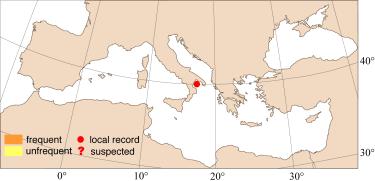
|
Relevant synonyms
Misidentification
Meristic formula
|
|
| photo : John E. Randall |
|
SHORT
DESCRIPTION
color :
in the pelagic phase the dorsal surface brown with black spots and the ventral white. The benthic fish is greenish-gray dorsally with small black spots on head, body and fins, shading to white ventrally.
size :
common 20-50 cm (max. 70 cm). |
DISTINGUISHING CHARACTERISTICS
Tetraodontidae: teeth in each jaw fused, with median suture. BIOLOGY / ECOLOGY
habitat :
bentho-pelagic. |
|
1st
MEDITERRANEAN RECORD
|

|
|
DISTRIBUTION
|
ESTABLISHMENT SUCCESS
speculated reasons for success :
|
|
|
MODE OF
INTRODUCTION |
IMPORTANCE TO
HUMANS |
|
KEY
REFERENCES
|
 Diodon echinus
Diodon echinus